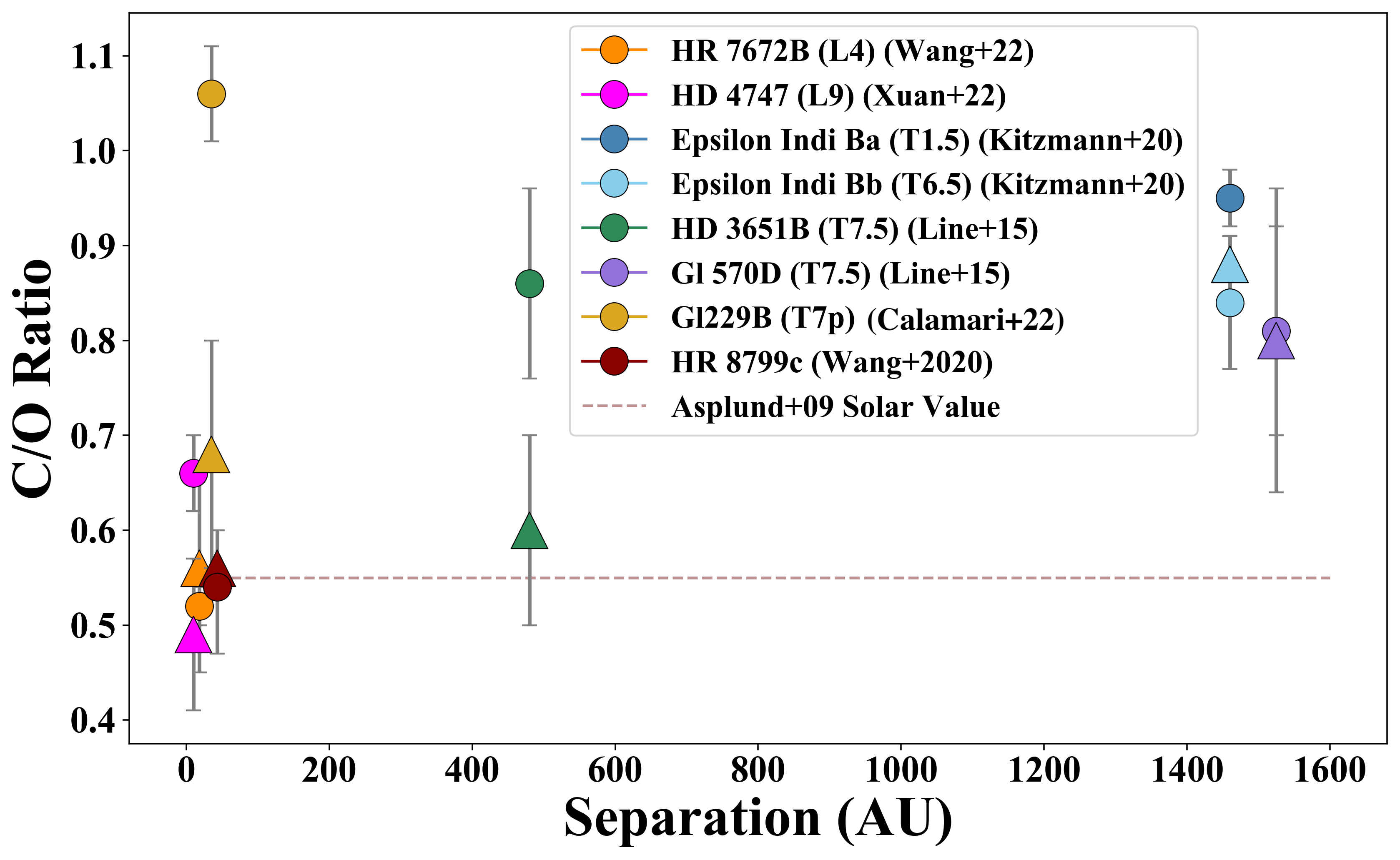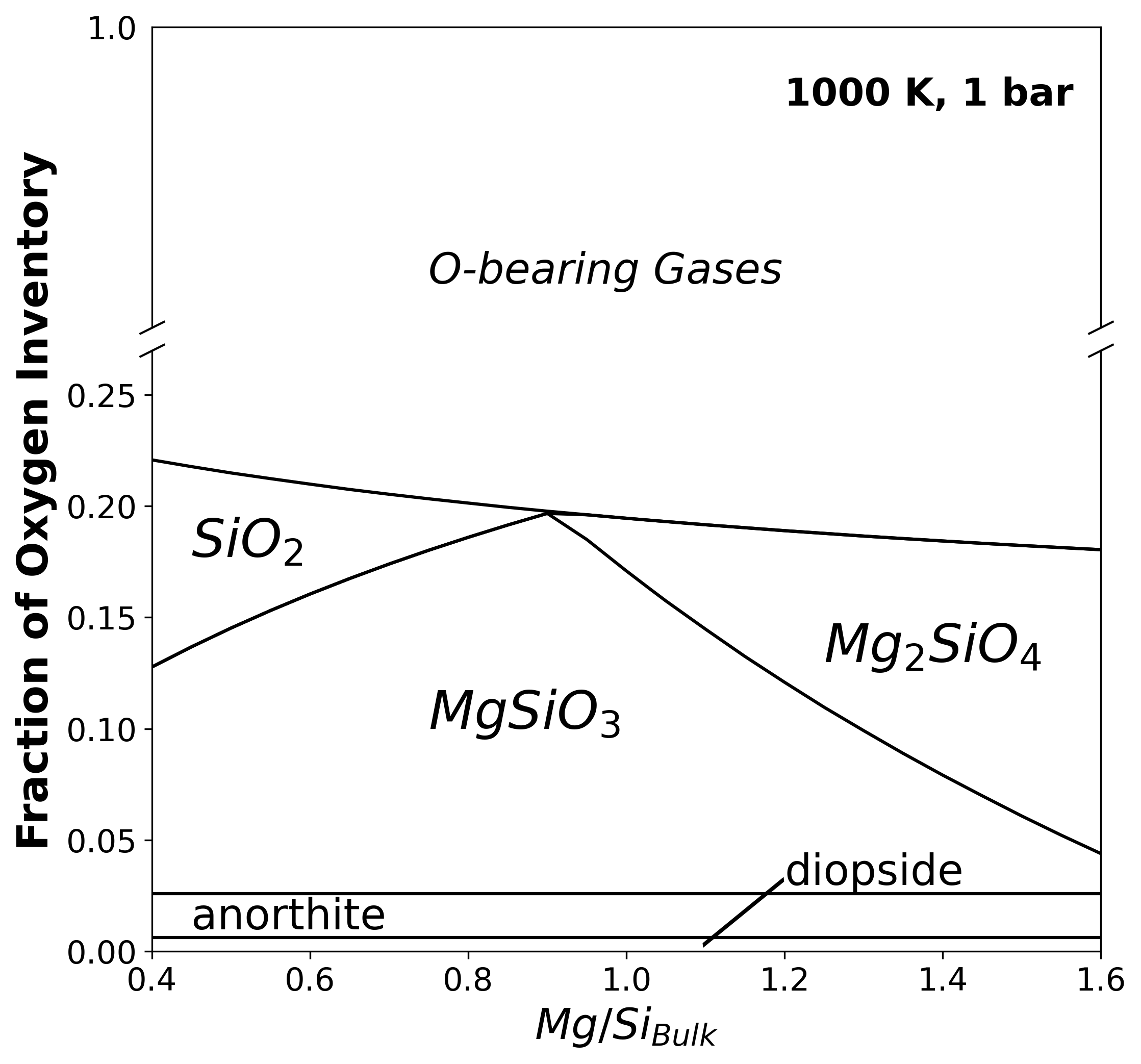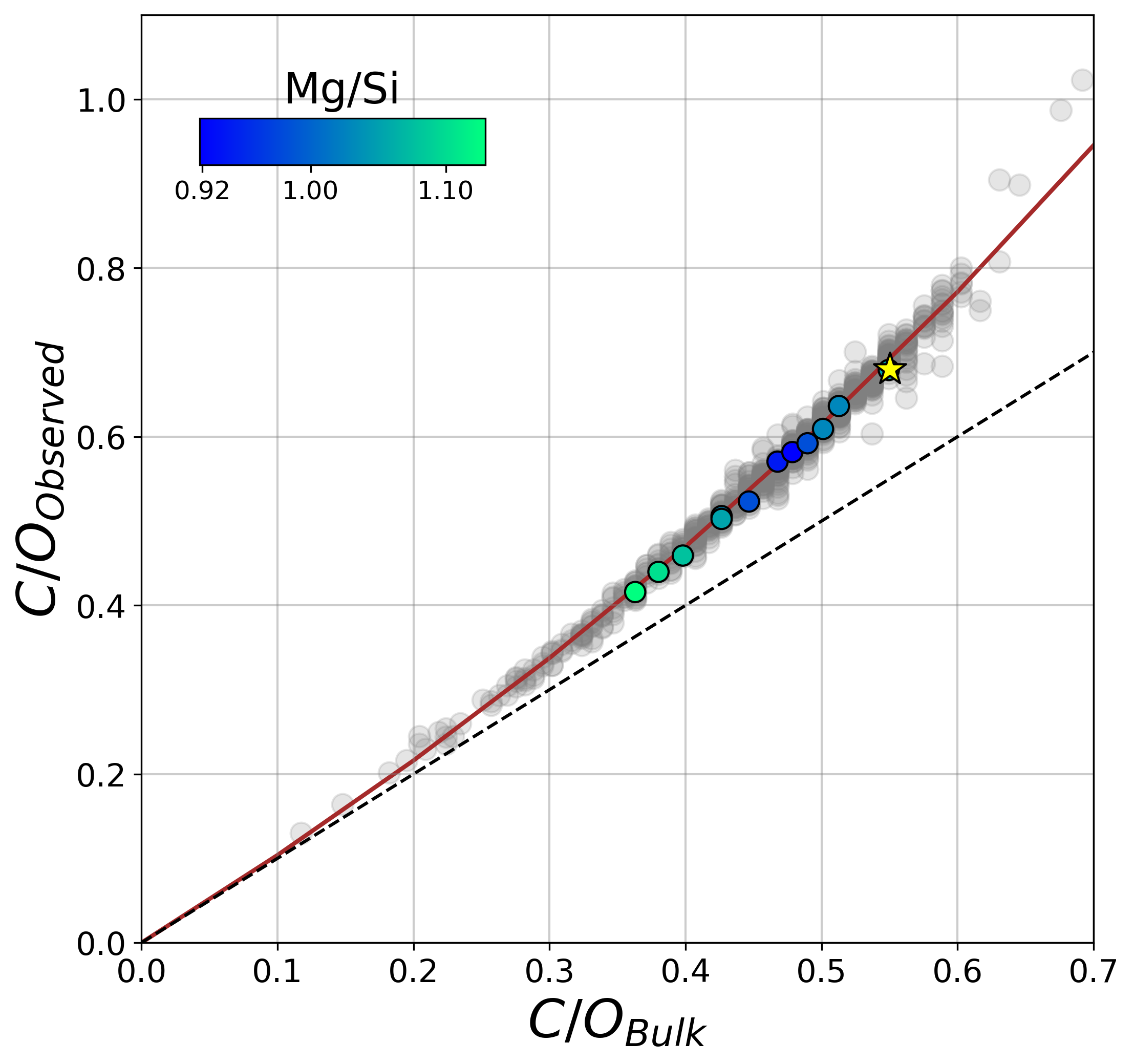Research
My research interests center around the atmospheric characterization and interpretation of substellar mass atmospheres through ground- and space-based observation and statistical modeling techniques. I am particularly interested in benchmark companion systems whose bright host star can add context to the system as a whole and help anchor properties like metallicity and age that are difficult to measure independently.
You can find a list of my publications via ADS.
Benchmark Case Study:
In this work, I used Bayesian statistical modeling, known as retrievals, to examine the atmosphere of the brown dwarf, Gliese 229B. We were able to show the power of using a companion brown dwarf to match chemical abundances across a system and discuss implications on substellar formation pathway and cloud formation. Read More

Benchmark Case Study Plot
In this figure, we show the differences in chemistry, particularly C/O ratio, between chemical abundances from brown dwarf retrieval models and that reported for their respective companion host stars.
Predicting Cloud Conditions:
In my most recent work, I examined the host star chemistry of a small sample of benchmark companion systems, as well as the solar neighborhood population of FGK stars, to ground the types of chemistry we might expect in nearby brown dwarfs. Via mass balance and stoichiometric calculations, we were able to predict the type of silicate cloud you might expect in a given atmosphere as well as the total percentage of oxygen sequestered into such clouds. Read More

Predicting Cloud Conditions Plot One
In this figure, we show the fraction of oxygen in a given silicate cloud based on an object’s bulk Mg/Si ratio as informed by its host star chemistry.

Predicting Cloud Conditions Plot Two
In this figure, we provide a correction to convert from “observed” (or, “atmospheric”) to “bulk” C/O ratio in a substellar mass companion.